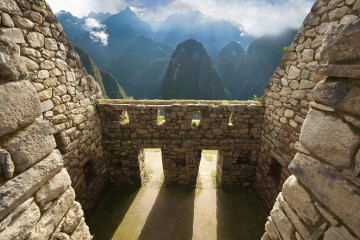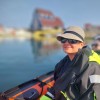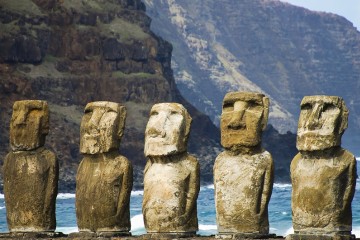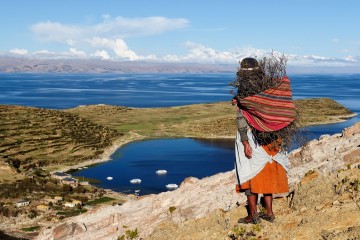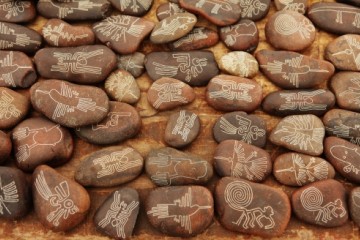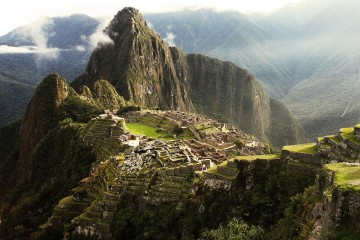If ancient rock paintings, carvings, statues and ruins get your juices flowing, then our collection of the best archaeological sites in South America is bound to make you weak at the knees. At Viva Expeditions, we specialise in custom tours of South America, helping clients to discover these ancient sites on their own South American adventures.
The choice of stellar sites is simply colossal in a continent with history and cultures dating back thousands of years.
Here are Viva Expeditions' top 10 favourite archaeological sites in South America!
Click the links below to skip through the blog:
-
- Machu Picchu, Peru
- Nazca Lines,Peru
- Chan Chan, Peru
- The Moais on Easter Island, Chile
- Cueva de las Manos, Argentina
- Tiahuanaco, Bolivia
- Jesuit Missions of the Guaranis, Brazil
- San Agustin Archeological Park, Colombia
- Parque Nacional de Serra de Capivara, Brazil
- Cuzco, Peru
1. Machu Picchu, Peru
The poster child of America’s historical treasure trove, the ancient Inca citadel of Machu Picchu is the one everyone wants to see. It’s certainly not hard to get the appeal of these astonishing Inca ruins.
Cradled in the luscious Sacred Valley and framed by a host of picturesque Andean peaks, Machu Picchu is an absolute visual feast. A visit is made all the more impressive when led by knowledgeable guides who can walk you through the construction and meaning behind every structure.
Primarily used as an astronomical observatory, Machu Picchu remained elusive to Spanish conquerors. Considering European invaders tended to destroy much of what they found in South America, the fact this city in the clouds was never discovered remains its saving grace.
This ancient city had farming terraces, aqueducts, homes, temples, altars, and more—all made by the Incas using stone cutting without mortar. Despite its age, Machu Picchu is remarkably well-preserved. Its beauty, the mysteries surrounding it, and its stunning location make it a fascinating place, even with a lot left unknown.
Visit by train for the day or on foot on a multi-day Lares Trek hiking adventure you won’t forget in a hurry.
NEWSFLASH: The Peruvian government has announced it will increase the daily visitor cap at Machu Picchu from January 1, 2024 – from 4,060 to 4,500 and perhaps even higher on specific dates yet to be confirmed. The move comes as the #1 archaeological site in South America was closed to the public for a month this year due to temporary political unrest. Get the latest on that front right here.
> Discover Machu Picchu on our Signature Tour of Peru
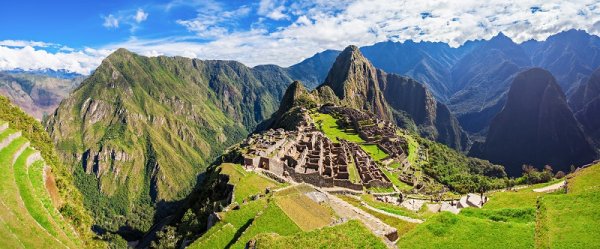
Machu Picchu is the most famous historical landmark in the Peruvian Andes
2. Nazca Lines, Peru
Etched on the dark desert soil of southern Peru, the Nazca Lines have been baffling scientists and enthralling visitors for over eight decades.
The most famous geoglyphs in the world are best admired on short sightseeing flights, although a couple of elevated platforms along the access road offer glimpses of some of the smaller shapes.
Stamped deep into the ground using earth, not from this immediate area, the Nazca lines were created by one of the oldest cultures in South America - one which left no written record. All we know about the Nazca lines are, for the most part, PURE speculation. And this certainly adds a special allure to them all.
Even more extraordinary is that new lines are still being discovered in Nazca, nearly a century after the first was found.
> See our tour of Nazca & Paracas
> Read more: Best time to visit Peru
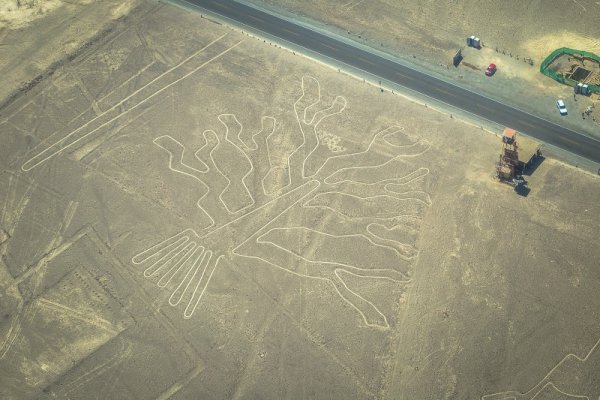
The spectacular Nazca Lines are etched in the southeastern desert of Peru
3. Chan Chan, Peru
The largest pre-Colombian city in South America, covering 20 square kilometres, Chan Chan is a beautifully preserved adobe citadel just outside the seaside surfing hub of Trujillo in northern Peru.
The site showcases the craftsmanship of the ingenious yet relatively short-lived Chimu people who roamed this region for 400 years before the Incas overthrew them in the 15th century. Once the Inca conquered Chan Chan, the city was all but left to ruin. In 1535, the Spanish set up the town of Trujillo and looted Chan Chan's wealth. They grabbed around $5 million worth of gold from one of the graves and a silver-covered doorway, which today would be valued at about $2 million.
Renowned for their distinct pottery designs, colourful textiles and architectural styles, the Chimus are among the least-known ancient people of South America and their legacy is outstandingly unique. Once home to more than 500,000 people, Chan Chan gained UNESCO recognition in 1986.
Discoveries are still being made here: in 2021, archaeologists uncovered a mass burial site containing the remains of 25 people, while in 2022, experts unearthed one of the oldest and best-preserved wooden sculptures ever found on the site.
> Ask our South America specialists about adding Chan Chan to one of our Peru tours
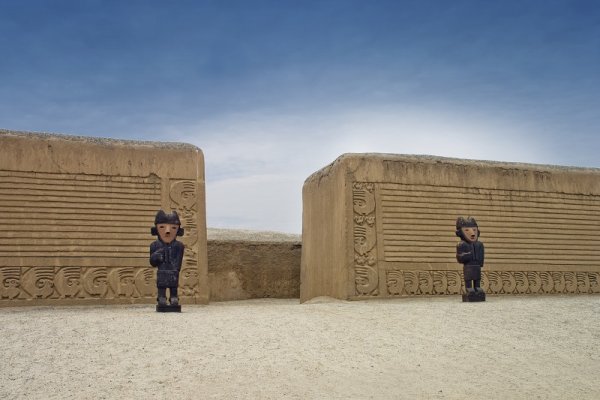
The spectacular ancient citadel of Chan Chan is still one of South America's most hidden treasures – yet at its peak, it was the largest city in the entire continent
4. The Moais of Easter Island, Chile
The giant carved statues that tower over some of the most beautiful landscapes on earth, the Moais of Easter Island, are exceptionally fascinating. They offer a genius excuse to visit what is, in reality, a sensational island.
UNESCO gave up trying to recognise Easter Island's prized assets (800 statues and then some) and declared the entire island one collective treasure. We couldn’t agree more.
Carved more than 500 years ago for reasons and by means yet unknown, the angular faces of the Moais – with their poker-face expression and impressive size – are one of the world’s most mysterious archaeological pearls.
Scientists recently discovered that the statues' eyes were once filled with coral. A new statue previously hidden in a volcanic crater lake was unearthed just a few months ago.
Made of compressed volcanic ash and from a quarry still hiding untold unfinished pieces, the colossal statues of Rapa Nui are undoubtedly one of the best historical sites in South America you should discover.
> See our Easter Island tours
> Read more: Best Adventure Travel Ideas for 2024
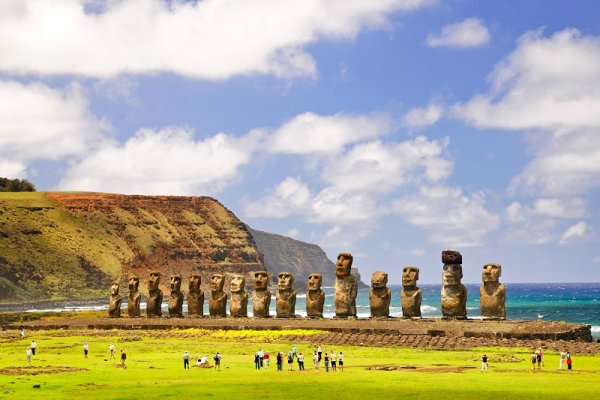
Wonders unearthed –UNESCO-protected Easter Island in Chile continues to reveal its mysteries
5. Cueva de las Manos, Argentina
The ‘marble cave of a thousand hands’ is one of the remotest historical sites in South America and one of the most astonishing.
Nestled in the Pinturas River Canyon in a remote region of Patagonia, the cave features striking stencilled handprints believed to have been painted almost 10,000 years ago. Yes, ten THOUSAND!
Cueva de las Manos is one of South America's oldest prehistoric sites and, unsurprisingly, one of its most prized ‘ancient artwork’.
Crafted by the ancestors of the Tehuelche community, these handprints provide an intimate connection to the past, showcasing a tangible link to the people who inhabited the area thousands of years ago. The ancient tribes of hunter-gatherers would pass by the caves as they followed migrating prey (mostly guanacos) seeking shelter in these caves and leaving their print behind for posterity, literally and figuratively speaking. The prints are not only of hands but also of them hunting their prey. Entire scenes of their daily life are depicted in rock.
> See our collection of Argentina tours
> Read more: 10 Incredible Patagonia Facts You Need to Know
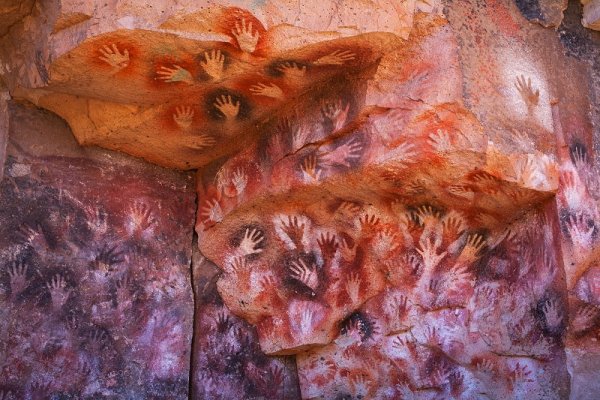
Ancient art and storytelling in the Cave of Hands, in Argentina
6. Tiahuanaco, Bolivia
Tiahuanaco, also sometimes spelt Tiwanaku, is an ancient archaeological site located near the southern shores of Lake Titicaca in the highland region of Bolivia. It is one of South America's most significant pre-Columbian archaeological sites and represents the capital of a powerful and influential civilisation that thrived between 500 and 1000 AD.
Considered one of the hidden treasures of South American archaeology, Tiahuanaco was the birthplace of the region's prehistoric culture and is virtually unknown. Most visitors to Lake Titicaca don't even realise it exists, despite its proximity and being UNESCO-listed in 2000.
Tiahuanaco comprises the ruins of four main structures, and although at first sight, it may seem like there's not much to admire, the mind-boggling story behind their construction (stones weigh up to 150 tonnes and were – somehow – carried for two dozen km), the fact it remains mostly unknown and is always uncrowded makes this an absolutely brilliant place to visit.
> See our collection of Bolivia tours
> Read more: Top 5 Natural Wonders of Bolivia
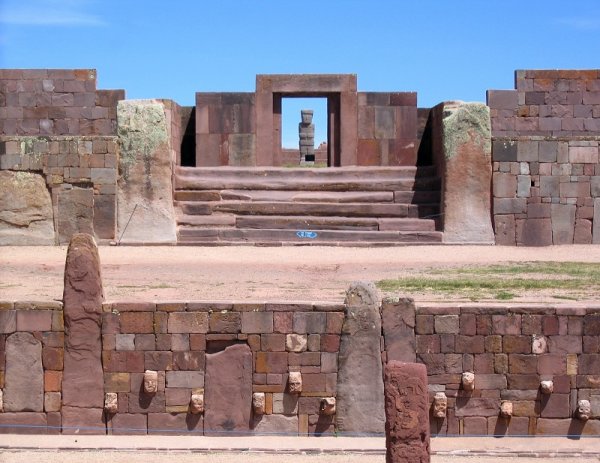
Bolivia is home to several of South America’s archaeological treasures
7. Jesuit Missions of the Guaranis, Brazil
In the 16th to 18th centuries, Jesuit missionaries aimed to assist, protect, and convert the indigenous Guarani people in South America. They established notable settlements in various countries, but today, their enduring legacies are evident only in Bolivia, Argentina, Paraguay, and Brazil.
The latter is home to the most beautiful of the 30-odd sites that make up the Jesuit Missions of the Guaranis collection: the Jesuit Mission of San Miguel Arcanjo.
Built in the 1700s, this UNESCO-listed Jesuit Reduction showcases the stunning Baroque architectural style which the Jesuits favoured. Given its historical and cultural importance, the local government has fervently preserved the site. This is undoubtedly the most rewarding of all the missions to visit in the region.
NB. Although European influence and invasions have certainly never been portrayed favourably in South American history, the Jesuits were and are still respected in the region by many. They were independent and autonomous and actively challenged the Spanish status quo, protecting the indigenous population from enslavement and persecution. Nevertheless, their primary mission was to convert the Guaranis, forever altering their traditional beliefs and way of life.
Our tours to Brazil can include Rio, Iguazu Falls, the Amazon Rainforest and the Jesuit Missions.
> Read more: The Best Wildlife Experiences in the Amazon
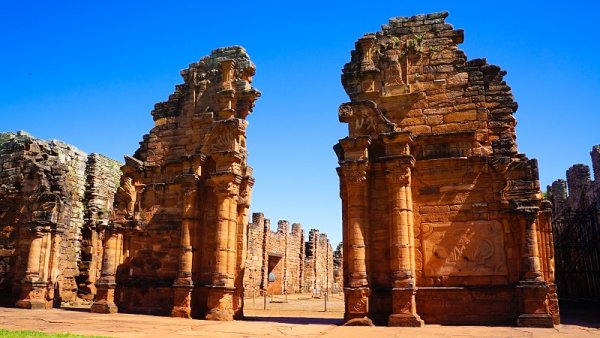
One of the entry gates of the San Miguel Arcanjo mission in Brazil
8. San Agustin Archaeological Park, Colombia
San Agustin represents South America's most extensive collection of ancient religious relics. It is also believed to be the world’s largest ancient cemetery. Ignore the slightly sombre subject, and you'd be forgiven for thinking this UNESCO-listed treasure is akin to an archaeologist’s amusement park!
Yes, Colombia's offering is a must-see when it comes to discovering the best archaeological sites in South America. Luckily, plenty of other lesser-known gems in the area make a side trip of a few days worth your while.
So, what's San Agustin all about?
The park comprises over 500 pre-Colombian statues, sarcophaguses and monoliths, some over 2,500 years old. They are found across an expansive area on the flanks of the lush Andean highlands in surprisingly well-planned-out 'sections’. All are related to death, funerals and burials and are beautifully maintained.
A visit to the park can take 3-4 hours, including a visit to the adjacent museum, which helps provide additional context (so you might want to head there first).
The small town of San Agustin, where this unmissable archaeological site is found, is way off the gringo trail and overlooked by many visitors. However, history lovers who visit are never disappointed.
> See our collection of Colombia tours
> Ask us about adding a visit to San Agustin to your Colombia tour
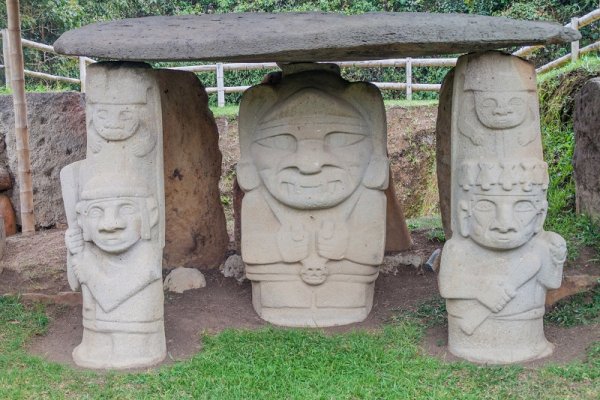
The unique religious relics at San Agustin Archaeological Park in Colombia
9. Parque Nacional de Serra da Capivara, Brazil
Brazil’s exceptional UNESCO-listed national park is a stunning double-whammy: almost 1,300 square km of gorgeous wilderness cradling over 1300 distinct archaeological sites, some of which are over 25,000 years old.
Experts label this the oldest and most extensive collection of prehistoric sites in South America, so if you're looking for that 'one-and-done' spot to visit, you may have just found it!
Cave paintings in rock shelters and complex cave systems with underwater lakes are an absolute pleasure to explore at length. The park was designated as a nature reserve to primarily protect the extensive collection of archaeological treasures, although it is considered a fantastic hiking destination in its own right. Plus, it offers drop-dead-gorgeous landscape views and plenty of wildlife-watching to boot.
> See our collection of Brazil tours
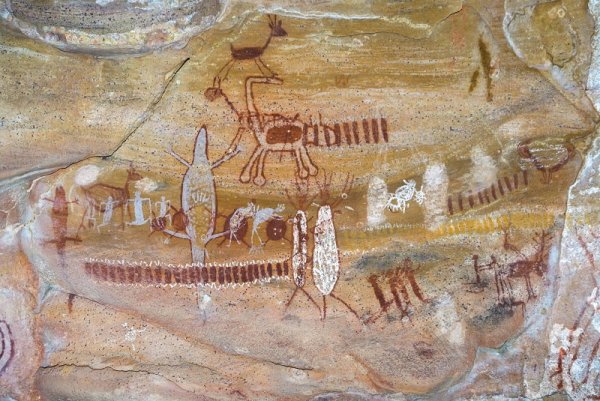
Discover ancient hand prints, cave paintings and so much more when you explore Brazil
10. Cuzco, Peru
The ancient capital of the Inca Empire is now the most visited city in all of Peru, thanks to its convenient location, proximity to Machu Picchu and, perhaps more importantly, its outstanding beauty.
At first glance, the town centre seems only a glorious showpiece for colonial-era architecture. Yet when you look closer, you’ll find an astonishing array of pre-Colombian treasures at every turn.
The base of the town’s magnificent cathedral is made of ancient Inca walls. Whenever a new hotel or house is built in the city, archaeological jewels are discovered. Stone laneways and old houses still show the legacy of this incredible ancient culture. Although mostly revered for its nearby archaeological sites, Cusco itself is an ancient splendour in its own right.
A visit to Cusco is unmissable when touring Peru!
> Read more: How to Experience Ancient Inca Traditions Today
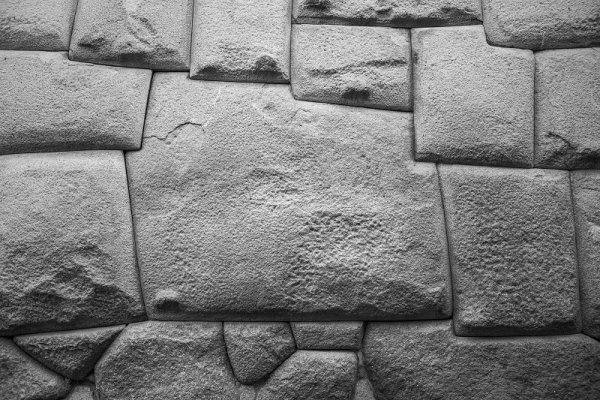
Ancient Inca masonry still standing strong in Cusco, Peru
The best archaeological sites in the South America do a fantastic job of showcasing the long and rich history of the continent. And they are all easy additions to your tour of South America.
Not sure how?
Speak to one of Viva’s Destination Specialists today, and they’ll help you create a seamless itinerary that includes all your favourite destinations.
Contact us today.
Laura Pattara
Laura Pattara writes for Viva Expeditions with a special love for all things Latin America. She had guided overland tours across the continent, reached Machu Picchu five times on foot, and even dressed up as a giant toucan for Carnaval. With a degree in languages and two decades of global travel experience behind her, Laura has a long-standing love for the Andes, soaring condors, and a truly delicious empanada.
|
